Q&A: Maryland expert talks climate change, wind energy and more before listening sessions
While top United Nations climate scientists indicated last month could be the hottest ever recorded, University of Maryland Center for Global Sustainability Director Nathan Hultman has been working for years to help keep the planet cool.
As the White House’s Deputy Associate Director for Energy & Climate Change during the Obama administration, he had a front row seat to the Paris Climate Agreement agreed to by over 190 countries in 2015 and 2016. The landmark agreement set a framework to lower greenhouse gas emissions and slow temperature rise by below 2 degrees Celsius from pre-industrial levels.
Now, after helping the Biden administration chart its climate strategy from the State Department and coordinating with China to come to an agreement on climate actions for the whole decade, Hultman has returned to his home state to assist the Maryland Department of the Environment map out its climate change plan through the university-backed center that he founded in 2016.
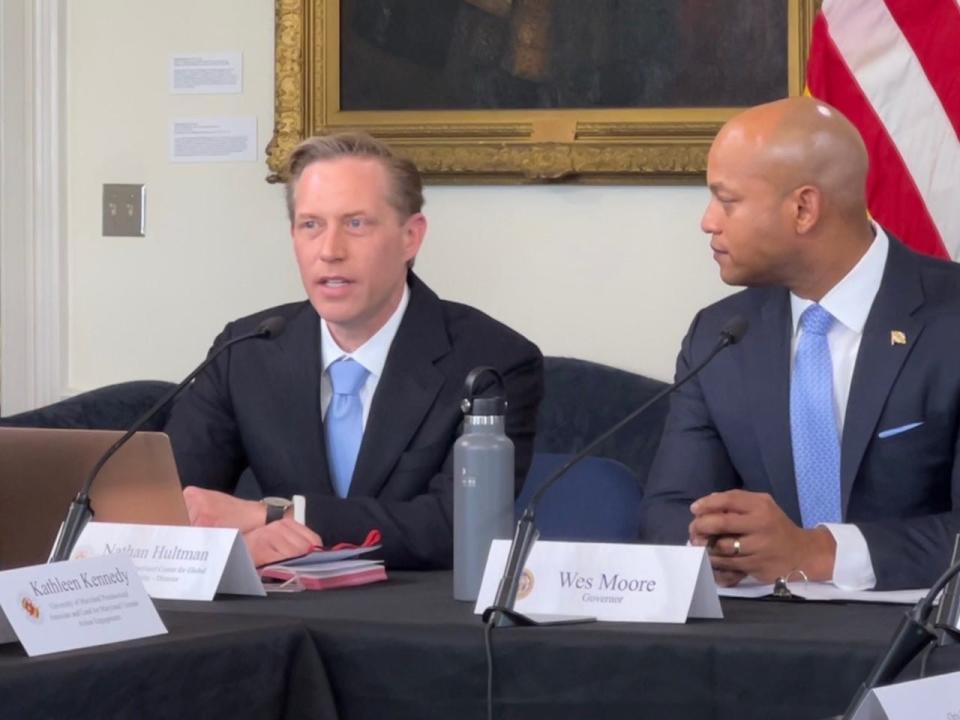
On Aug. 3, the same week that the federal Bureau of Ocean Energy Management announced an additional wind energy area off the coast of Ocean City, Hultman sat down with Maryland’s USA TODAY Network to discuss offshore wind energy, upcoming climate listening sessions across the state (including in Hagerstown on Aug. 8 and Salisbury on Aug. 19), climate policy generally, and where the state, U.S. and world are headed, striving to achieve ambitious climate goals. The following conversation has been edited for length and clarity.
More: Ocean City delegate's amendment left behind as Maryland pushes ahead with offshore wind
You’ve participated in some of the most important international climate-related forums. What do you and the Center for Global Sustainability hope to gain from these statewide listening sessions on Maryland’s Climate Pathway?
We at the center are very excited to be able to use some of the research approaches that we have here, working with (the Maryland Department of the Environment) and other agencies in the state to better understand opportunities that Maryland would have to reach the climate goals that have been put forward by the legislature and entered into law.
We are here to support the state, and the listening sessions are really designed to enable the state through (the Maryland Department of the Environment) to hear feedback from different kinds of people, businesses and communities around the state in terms of the ideas put forward in the (Climate Pathway) report that (the center and state) produced in June.
You’ve been engaged in this work for over 25 years. How would you describe the global climate situation to people who are just starting to educate themselves?
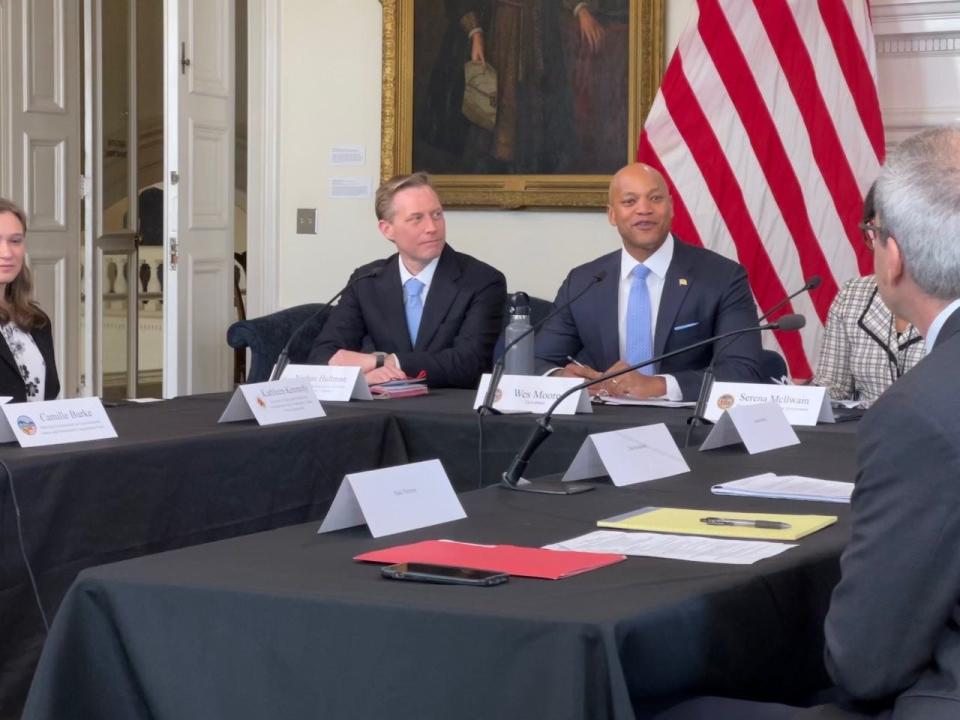
I think a lot of people have felt aspects of climate change even this year in Maryland. We are vulnerable in this state to a number of different dimensions of climate change.
Obviously, sea level rise is a big one for parts of our state that we’re highly vulnerable to as well as the temperature changes that could lead to droughts and floods and other types of climate impacts.
More: Moore wants Maryland to lead on offshore wind.
If you look at taking a bigger step back, not just in our state, but thinking about the global situation, this year is an important year for the global community to be essentially assessing how we are doing at collectively addressing climate change.
In the international discussions, there’s a focus on assessing where we’ve come from and how we’re doing. Unfortunately, a lot of the science that has come in now is all pointing in the direction that the climate issue is, unfortunately, only getting worse unless we take the important kinds of steps that the state is proposed to do under this recent legislation and the pathways that are shown in the report.In the (2022) Climate Solutions Now Act, our state put forward two ambitious goals: One is for 2031 to reduce our (greenhouse gas) emissions by 60 percent (from 2006 levels) and the other is to get our economy to a net-zero trajectory by 2045.
One thing that often gets lost in the discussion are incremental victories. Maryland, for instance, met its 2020 goal in reducing greenhouse gas emissions from 2006 levels. How important is it to be setting these goals, achieving them, and then what should be done once they’re complete?
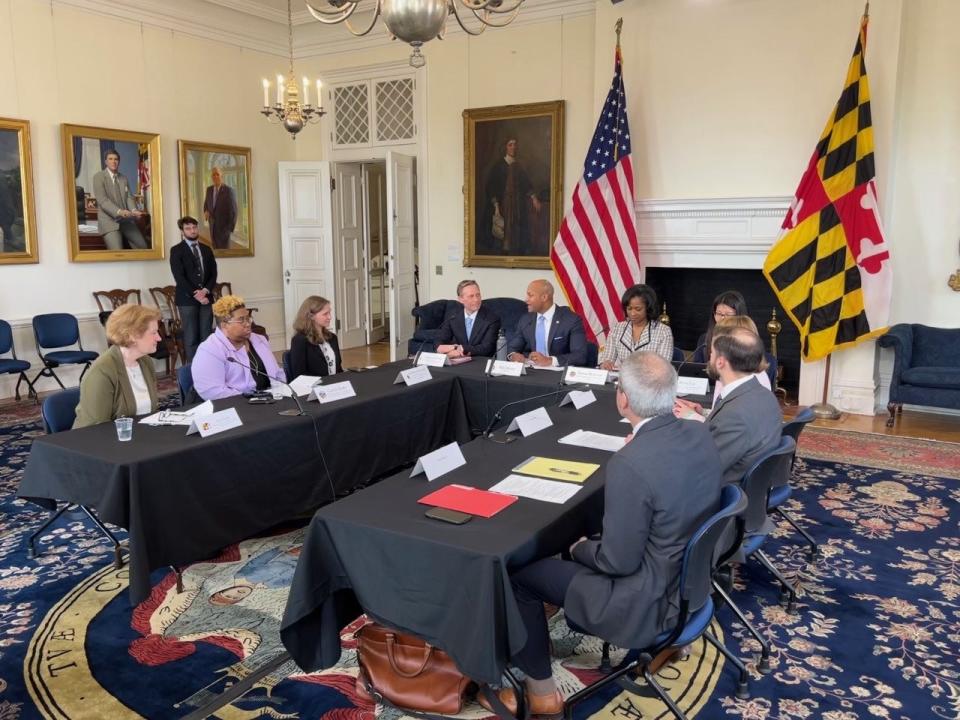
That’s a really great point, and one that I often myself will try to make when speaking about this process.
We’re also not starting that transition today. It’s actually been ongoing for a couple of decades already, and where we are today is actually made possible by past experience, by past policies that have supported the initial deployments of technologies like solar or wind or even batteries.
Those initial investments, those initial deployments that have been happening for the last couple decades paved the way for where we are today. In the last five to seven years, we’ve seen a dramatic transformation of the different costs in our energy technologies across the economy, with clean technologies becoming very, very inexpensive and very cost effective.
So ultimately, the kind of opportunities that we see, from say 2023 to 2031, are the result of past experience to get us to this point today.
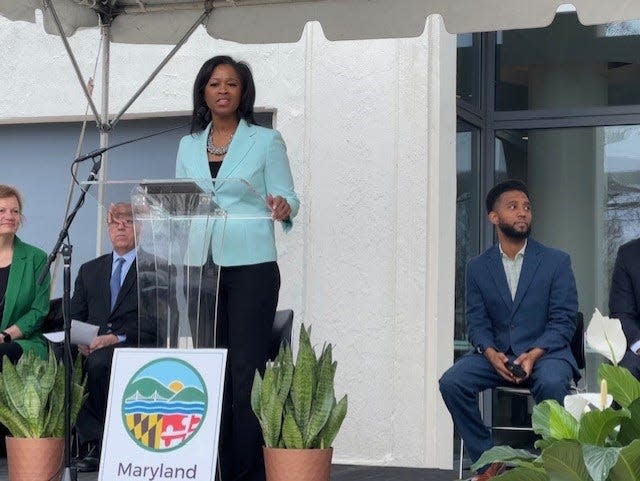
More: As Moore administration races ahead with clean cars, state far behind goal
One of those clean technologies is offshore wind energy. A law passed this year in Maryland has mapped out quite a transformation for wind power off the state’s Eastern Shore, where a turbine has yet to be installed. A 2022 report showed China already has about 20x the offshore wind energy capacity installed that the U.S. does. How is it that China has implemented so much more wind energy capacity than the United States at this point?
That’s a great question. We can learn a couple of things from that observation. Number one, if we look across the world, there are differences in deployment rates for clean technologies in different countries.
Here in the U.S., there have been successful rapid deployments of renewable technologies — onshore wind, solar, potable heating technology, for example — in the recent decade. There’s been accelerated deployment of those technologies, which will only get faster as the result of new incentives that we’re seeing flowing from not only states like Maryland, but also from federal legislation like the Inflation Reduction Act.
More: Maryland offshore wind push gains momentum with federal help. Here's what lawmakers plan.
We do have areas in the U.S. that we have been able to successfully deploy renewables and we’ll likely accelerate that in the future, but it is true that China has been a global leader in the rate of technologies that they’re deploying in the clean economy, so solar, wind — onshore as well as offshore wind.
Admittedly, part of that is because China is a significantly larger country in terms of its overall population and they’re putting in more technology in proportion to that.
On the other hand, I think it is fair to say that we in the U.S. could certainly do more. I think part of what we’re seeing in even the recent couple of years both at the federal level and at the state level in many states, including Maryland, is setting our sights higher to try to accelerate that transition.
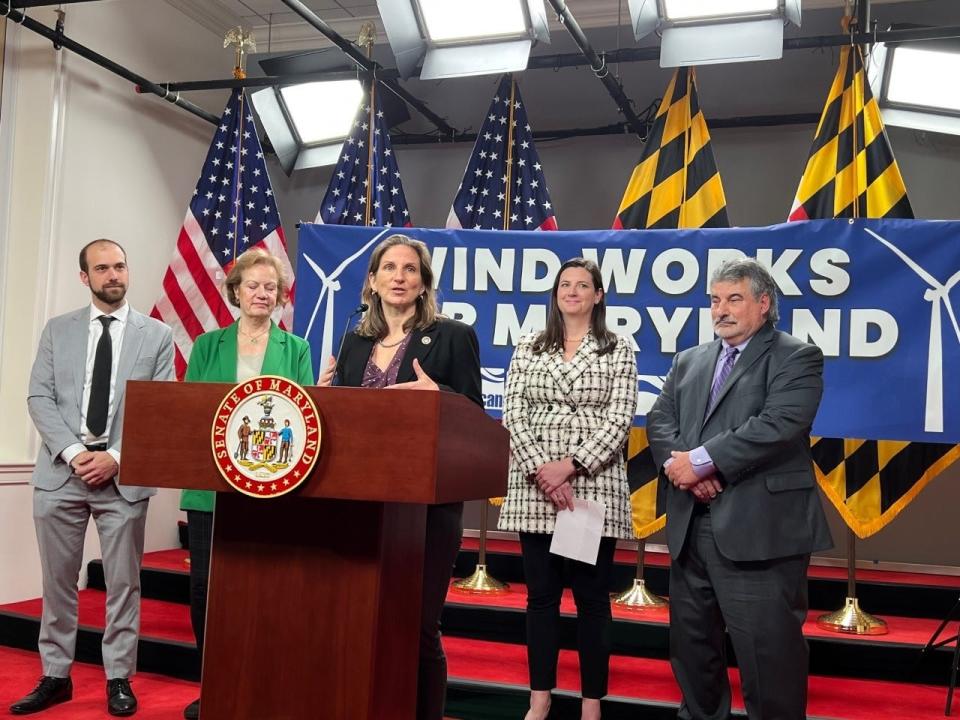
Are the processes that the U.S. has in place to set the country on a course for offshore wind adoption adequate for the speed at which this transition to clean energy is needed? (Note: Last month, Maryland’s U.S. senators wrote a letter to the Biden administration, urging the designation of a policy lead in order to coordinate the country’s offshore wind projects.)
That’s a very good question, and certainly one of the challenges of renewable deployment is always where do you put it, and how do you integrate that into different kinds of communities. That’s a conversation that I think we do need to be taking seriously and having open discussion about.
That’s something that, as we are looking to accelerate that already vast deployment of clean energy technology, will be part of the overall U.S. story of how we ultimately will, hopefully will, succeed in the effort.
Making sure that those changes that are happening in the energy system are done in a way that follows the right procedures, makes sure that voices are heard in terms of steering those particular technologies in the right way to be installed in ways that will benefit the communities they’re adjacent to, as well as offering not just the jobs and economic benefits from construction and ongoing generation, but also help clean up the local air.
More: Wind energy hot topic as General Assembly wraps up Gov. Wes Moore's first session
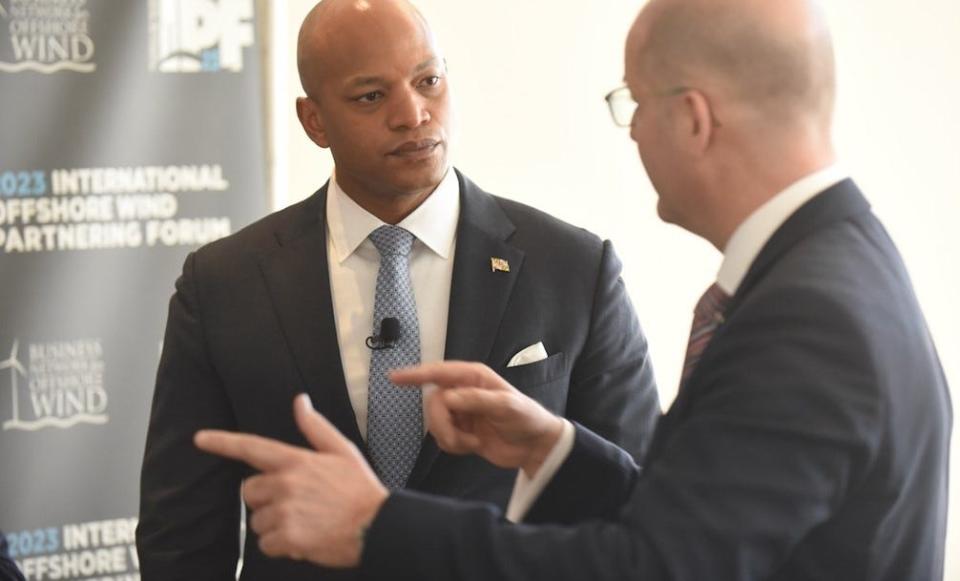
There’s always a balancing act of making sure to consider all the different perspectives on how best to go forward.
But doing that process well and doing that process right I think is something, hopefully, that our state is very much focused on.
You’ve witnessed incredible moments of international coalescence such as the Paris Climate Agreement at the United Nations Climate Change Conference (COP21 in Paris). What have you learned from those moments of international coalescence? And how can that be instructive for Marylanders and global citizens forging the pathway ahead?
That’s a great question. Thanks for asking that. So the first way I would approach that is to say this global challenge of climate change, I think we all understand that it’s severe, it’s imminent, it’s urgent and it’s present. It’s happening today.
The science supports that essentially across the board.
We also understand from the science that we can still turn our economy towards a cleaner future in ways that will avoid the worst risks of that climate change, and that’s really important.
We’re not stuck. We can still accomplish the goal that we set for ourselves.
More: New Maryland recycling law aims to shift the culture. What will it mean for you?
Importantly, though, that global solution of addressing climate change can only be made possible by doing the real work of that economic transformation on the ground and at ground level, in states, in cities, in countries across our united states.
More: ‘To help people rise’: Mayor of Crisfield has slate full of projects for waterfront city
It’s very important that we in Maryland see our work as contributing in two important ways. Clearly, it’s something that we’re doing for the state of Maryland, something that’s going to be providing local benefits, providing jobs, providing cleaner air, better health for our people here.
But also it’s encouraging that by doing this work here that makes sense for us, we’re also contributing to the ability of the entire planet to get on a better track.
We have a real opportunity here in Maryland because we’ve set our sights high to transform our economy in ways that will lead into the economy of the 21st century for our own state.
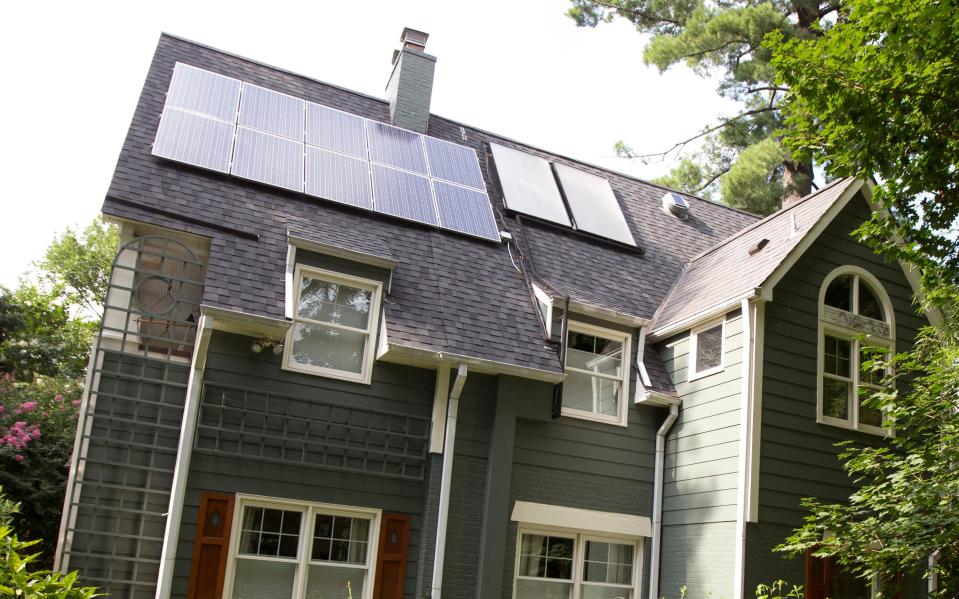
We got to do it right. What that means is: This is a challenge. To do this thing right, to actually accomplish that really challenging trajectory that we’ve set for ourselves, is to work together, to partner, to communicate with each other and to do the best things that we often can do in Maryland, which is to work in partnership.
The state has essentially invited for us all to participate as part of this process. We do need to think about what pathway will work in which place, how that’s going to be best implemented in which locations, how we balance all the different questions and needs of each individual community, and make sure that the benefits flow to all (of) Maryland.
All of that is part of a process that will create the conditions for successfully achieving those climate goals that the state’s set for ourselves. As we do that we’ll also contribute to this economic transformation as well.
It is really important for us in Maryland to recognize that we have the ability to do this.
More: Maryland Clean Trucks legislation moves forward, but still a long road to reduce emissions
Make your voice heard
The Maryland Department of the Environment is currently seeking the public’s input on climate change strategies for the state. A full schedule of the listening sessions can be found online, and the next session is Aug. 8 at Hagerstown Community College, then Aug. 19 at Salisbury University. The state is scheduled to publish a Greenhouse Gas Emissions Reduction Plan in December 2023.
This article originally appeared on Salisbury Daily Times: Maryland expert talks climate change, wind energy and more in Q&A

